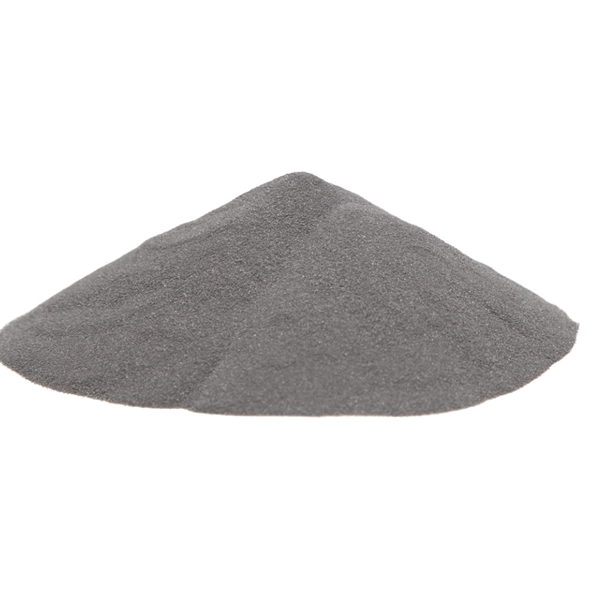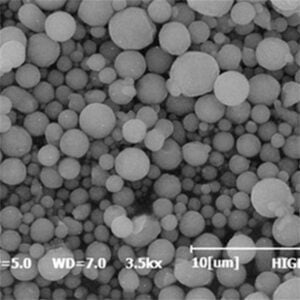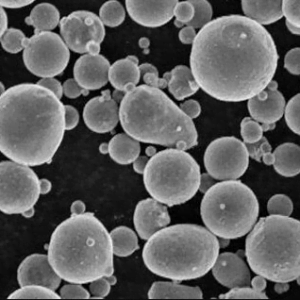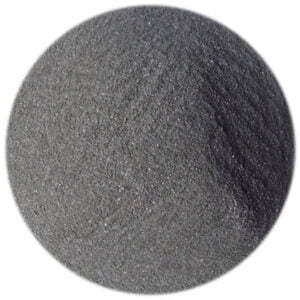Metallpulver för 3D-utskrift: Mekanisk legeringsutrustning
Innehållsförteckning
Världen av 3D-utskrift av metallpulver har lämnat plastprydnadssaker och figurer bakom sig och tagit steget in i den robusta metallvärlden, tack vare framsteg som mekanisk legering. Detta innovativa tillvägagångssätt frigör potentialen för att konstruera nästa generations material med skräddarsydda egenskaper, vilket flyttar fram gränserna för vad som är möjligt inom additiv tillverkning. Men bakom kulisserna är det en symfoni av specialutrustning som orkestrerar denna metalliska skapelse. Låt oss dyka in i hjärtat av denna process och utforska de viktiga verktygen som gör mekanisk legering 3D-utskrift av metallpulver till verklighet.
Produktionsutrustning för mekanisk legering 3D-utskrift av metallpulver
Föreställ dig en mikroskopisk balett, där elementära partiklar noggrant koreograferas till en sammanhängande helhet. Mekanisk legeringsutrustning förkroppsligar denna bild och manipulerar noggrant råmaterial för att uppnå önskad sammansättning och mikrostruktur. Här är en sammanfattning av de viktigaste aktörerna:
- Högenergi-kulkvarnar: Föreställ dig en stålkammare fylld med kulor som virvlar runt och kolliderar med samma kraft som en orkan i miniatyr. Detta är kärnan i en högenergikulkvarn. Genom att utnyttja de kombinerade effekterna av slag, friktion och skjuvkraft pulveriserar och blandar dessa arbetshästar elementpulver till en enhetlig blandning. Olika kvarntyper, som planet- och attritorkvarnar, erbjuder variationer i bearbetningskraft och pulveregenskaper.
- Utrustning för siktning och klassificering: Alla partiklar är inte skapade lika. Efter den högenergiska dansen i kulkvarnen kommer en sorteringsprocess in i bilden. Siktar med olika maskstorlekar fungerar som filter och separerar det önskade partikelstorleksintervallet från blandningen. Detta säkerställer konsistens i det slutliga pulvret, vilket är avgörande för framgångsrik 3D-utskrift av metallpulver.
- System för hantering och lagring av pulver: Tänk dig att jonglera med känsligt metalldamm. Det är just därför som korrekt hantering och förvaring är avgörande. Specialiserade system som inerta gaskapslingar och handskboxar säkerställer att pulvret förblir fritt från kontaminering och fukt, vilket bevarar dess integritet och tryckbarhet.

Jämförelse av för- och nackdelar med olika typer av enheter
Varje del av utrustningen i den mekaniska legeringsorkestern har sina egna styrkor och svagheter. Att förstå dessa nyanser är avgörande för att göra välgrundade val:
| Utrustning | Fördelar | Nackdelar |
|---|---|---|
| Högenergi-kulkvarnar | Mångsidig, skalbar för olika pulvervolymer, lämplig för ett brett utbud av material | Hög energiförbrukning, risk för kontaminering om den inte underhålls ordentligt |
| Planetkulkvarnar | Hög malningseffektivitet, lämplig för produktion av små partier | Begränsad kapacitet jämfört med andra typer av kvarnar |
| Attritor-kvarnar | Hög skjuvkraft för effektiv blandning, bra för att uppnå finare partikelstorlekar | Mer komplex konstruktion jämfört med andra kvarnar, potentiellt högre underhållskostnader |
| Utrustning för siktning och klassificering | Enkel och tillförlitlig metod för kontroll av pulverstorlek | Begränsad separationseffektivitet för mycket fina pulver |
| Kapslingar för inert gas | Utmärkt kontroll över pulveratmosfären, minimerar risken för kontaminering | Kräver ytterligare utrymme och infrastruktur |
I slutändan vilar valet av utrustning på flera faktorer, inklusive:
- Önskad pulversammansättning och egenskaper: Olika utrustningskombinationer kan vara bättre lämpade för att uppnå specifika materialegenskaper.
- Produktionsvolym: Högenergibollkvarnar tillgodoser större produktionsbehov, medan planetkvarnar är mer praktiska för små partier.
- Budget: Utrustningens komplexitet och funktionalitet påverkar direkt dess kostnad.
Guide för val av utrustning för mekanisk legering
Att välja rätt utrustning är ungefär som att välja de perfekta instrumenten för ett musikstycke. Här är en vägledande melodi som hjälper dig att navigera i urvalsprocessen:
- Definiera önskade pulveregenskaper: Vilken specifik sammansättning, partikelstorlek och form eftersträvar du?
- Tänk på din produktionsvolym: Är du inriktad på småskaliga forskningsprojekt eller storskalig industriell produktion?
- Utvärdera dina budgetbegränsningar: Var realistisk när det gäller de ekonomiska resurser som finns tillgängliga för inköp av utrustning.
- Rådgör med experter: Sök vägledning från erfarna ingenjörer och utrustningstillverkare för att navigera i de tekniska nyanserna och säkerställa kompatibilitet med din övergripande 3D-utskrift av metallpulver setup.
Genom att noga överväga dessa faktorer kan du säkerställa att ditt val av utrustning harmoniserar med dina övergripande produktionsmål och bidrar till en framgångsrik framställning av högpresterande metallpulver.
Metallpulver för mekanisk legering 3D-utskrift av metallpulver
Nu när vi har utforskat utrustningen kan vi rikta uppmärksamheten mot stjärnan i showen: själva metallpulvret. Här är en glimt av det mångsidiga landskap av material som väntar på att låsas upp genom mekanisk legering:
1. Pulver av rostfritt stål: Ett mångsidigt och allmänt använt material med utmärkt korrosionsbeständighet och mekaniska egenskaper. Vanliga kvaliteter är 316L och 17-4 PH.
2. Aluminiumlegeringar: Dessa lätta och starka pulver är idealiska för applikationer som kräver viktminskning och god maskinbearbetbarhet. Populära alternativ inkluderar AlSi10Mg och AlSi7Mg0.3.
3. Nickelbaserade legeringar: Dessa pulver har exceptionell hållfasthet vid höga temperaturer och korrosionsbeständighet och är perfekta för krävande flyg- och energitillämpningar. Inconel 625 och Inconel 718 är framträdande exempel.
4. Kobolt-kromlegeringar: Dessa pulver är kända för sin biokompatibilitet och slitstyrka och används ofta i medicinska implantat och dentaltillämpningar. CoCrMo och ASTM F75 är vanliga val.
6. Verktygsstål: Dessa pulver ger enastående hårdhet och slitstyrka och är lämpliga för att skapa hållbara verktyg och formar. H13 och AISI D2 är populära alternativ.
7. Kopparlegeringar: Dessa pulver har utmärkt termisk och elektrisk ledningsförmåga och är väl lämpade för applikationer i värmeväxlare och elektriska komponenter. CuSn6 och CuZn15 är exempel som ofta används.
8. Pulver av eldfasta metaller: Dessa pulver har exceptionella högtemperaturegenskaper och oxidationsbeständighet och används i applikationer som ugnskomponenter och delar till raketmotorer. Volfram och tantal är bra exempel.
9. Ädelmetallpulver: Guld-, silver- och platinapulver har unika egenskaper som hög elektrisk ledningsförmåga, korrosionsbeständighet och biokompatibilitet, vilket gör dem lämpliga för specialiserade tillämpningar inom elektronik, smycken och medicintekniska produkter.
10. Amorfa metallpulver: Med unika egenskaper som hög hållfasthet, utmärkt elasticitet och enastående korrosionsbeständighet öppnar dessa pulver dörrar för innovativa tillämpningar inom områden som transformatorer, sensorer och sportartiklar.
Den här listan skrapar bara på ytan av den enorma potential som metallpulver erbjuder inom mekanisk legering 3D-tryckning av metallpulver. I takt med att forskning och utveckling fortsätter att flytta fram gränserna kan vi förvänta oss att ett ännu bredare spektrum av material kommer att dyka upp, som alla öppnar upp nya möjligheter inom additiv tillverkning.

VANLIGA FRÅGOR
1. Vilka är fördelarna med mekanisk legering för 3D-utskrift av metallpulver?
Mekanisk legering erbjuder flera fördelar jämfört med traditionella pulverproduktionsmetoder. Det gör det möjligt för:
- Skapande av nya material: Genom att blanda olika grundämnespulver kan ingenjörer skapa material med unika egenskaper som inte går att uppnå med konventionella metoder.
- Förbättrad jämnhet i pulvret: Den högenergiska fräsningsprocessen säkerställer en jämnare fördelning av elementen i pulverpartiklarna, vilket leder till konsekventa materialegenskaper och förbättrad tryckbarhet.
- Finare pulverstorlekar: Med mekanisk legering kan man uppnå finare pulverstorlekar jämfört med andra metoder, vilket kan vara fördelaktigt för vissa 3D-utskriftstekniker som lasersmältning.
2. Vilka är begränsningarna med mekanisk legering för 3D-utskrift av metallpulver?
Trots sina fördelar har mekanisk legering också vissa begränsningar:
- Hög energiförbrukning: Processen kan vara ganska energikrävande, vilket kan vara ett problem vid storskalig produktion och ur ett miljömässigt hållbarhetsperspektiv.
- Potential för kontaminering: Om fräsutrustningen inte underhålls ordentligt kan föroreningar tillföras pulvret, vilket påverkar dess kvalitet och tryckbarhet.
- Begränsad skalbarhet: Att skala upp produktionen för stora mängder pulver kan vara en utmaning och kan kräva specialutrustning.
3. Vilka faktorer bör man tänka på när man väljer metallpulver för 3D-utskrift med mekanisk legering?
Det finns flera faktorer som påverkar valet av metallpulver för mekanisk legering:
- Önskade materialegenskaper: Pulvrets specifika sammansättning och mikrostruktur avgör dess slutliga egenskaper som styrka, korrosionsbeständighet och värmeledningsförmåga.
- Pulverstorlek och morfologi: Pulverpartiklarnas storlek och form påverkar i hög grad tryckbarheten och de slutliga egenskaperna hos den 3D-utskrivna delen.
- Kostnad och tillgänglighet: Olika metallpulver varierar i pris och tillgänglighet, vilket måste tas med i den totala produktionskostnaden.
4. Hur ser framtiden ut för mekanisk legering av metallpulver för 3D-printing?
Framtiden för mekanisk legering ser ljus ut, med pågående forskning och utveckling som fokuserar på:
- Utveckling av nya och mer effektiva fräsprocesser: Det kan handla om att utforska alternativa malningstekniker eller optimera befintliga för att minska energiförbrukningen och förbättra bearbetningseffektiviteten.
- Utökat utbud av material som lämpar sig för mekanisk legering: Forskare utforskar ständigt nya materialkombinationer för att hitta nya egenskaper och funktioner för 3D-printingtillämpningar.
- Integration med avancerad 3D-utskriftsteknik: I takt med att 3D-printingteknikerna utvecklas finns det potential för ännu större synergier mellan mekanisk legering och dessa tekniker, vilket leder till att man kan skapa ännu mer komplexa och högpresterande detaljer.
Genom att övervinna nuvarande begränsningar och anamma pågående framsteg är mekanisk legering redo att spela en avgörande roll för att forma framtiden för 3D-utskrift av metallpulver och flytta fram gränserna för vad som är möjligt i den spännande världen av additiv tillverkning.
Dela på
MET3DP Technology Co, LTD är en ledande leverantör av lösningar för additiv tillverkning med huvudkontor i Qingdao, Kina. Vårt företag är specialiserat på 3D-utskriftsutrustning och högpresterande metallpulver för industriella tillämpningar.
Förfrågan för att få bästa pris och anpassad lösning för ditt företag!
Relaterade artiklar

Högpresterande segment för munstycksvingar: Revolutionerande turbineffektivitet med 3D-utskrift i metall
Läs mer "Om Met3DP
Senaste uppdateringen
Vår produkt
KONTAKTA OSS
Har du några frågor? Skicka oss meddelande nu! Vi kommer att betjäna din begäran med ett helt team efter att ha fått ditt meddelande.

Metallpulver för 3D-printing och additiv tillverkning
FÖRETAG
PRODUKT
cONTACT INFO
- Qingdao City, Shandong, Kina
- [email protected]
- [email protected]
- +86 19116340731
















